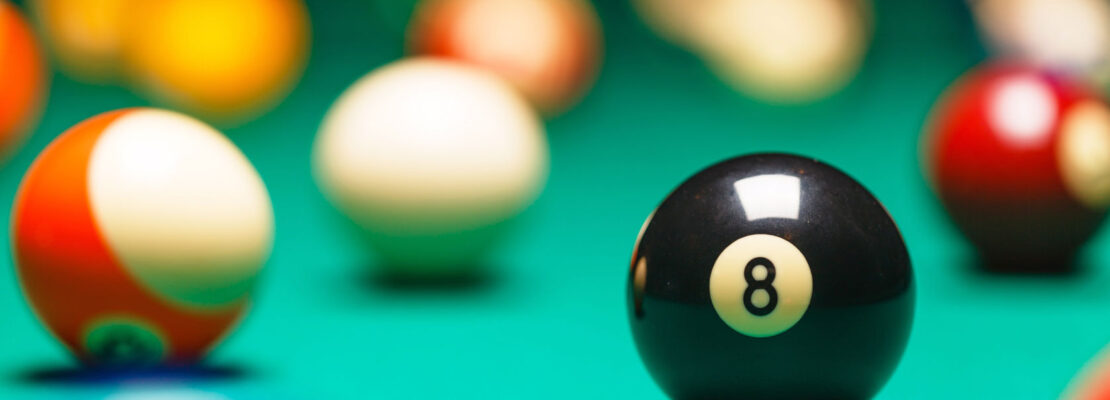Whether improving your skills to win bets at your local bars or taking a chance to be a professional, it takes time and hard work to improve your skills. Playing pool is a game of form, strategy, grit, and luck.
Nonetheless, knowing how to play pool and getting better at it can be a challenge. That’s why we compiled a list of expert tips guaranteed to make your play better at your own pace.
1. Sticking at The Fundamentals
Getting used to your fundamentals is the key to kickstarting your skill level from average to somewhat close to pro level. Because playing pool takes proper technique before shooting power, here’s what you need to check before taking your first shot.
2. Get a Proper Pool Set
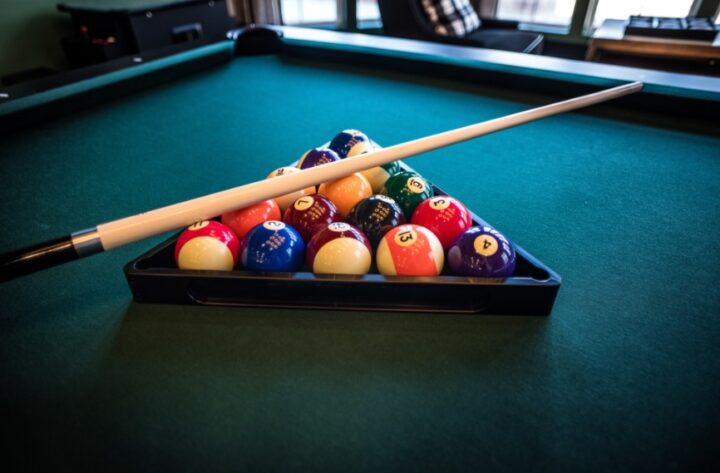
Having your cue stick works wonders in practicing with your form. While every stick looks the same, they come in various forms in wraps, materials, and cue tips.
It is highly advised to test out some cue sticks and see the feel of it. If you want to purchase one, there’s a good collection online at the Port Power merchandise store.
3. Gripping the Cue
A common mistake when learning pool is how you grip your cue stick. You may think the tighter your grip is, the more accurate your shots will be. Having that logic is natural, but it’s the wrong approach.
The reason is that you tend to raise the butt of the stick slightly, making it harder to shoot straight when placing a sudden forward push, resulting in frequent misses. Instead, opt for a loose and lighter hold on your stick and let it rest on your fingers to stay accurate when lining up for a shot.
This takes time, so find the right mix of grip and control until you can make straight shots properly.
4. The Pendulum Swing
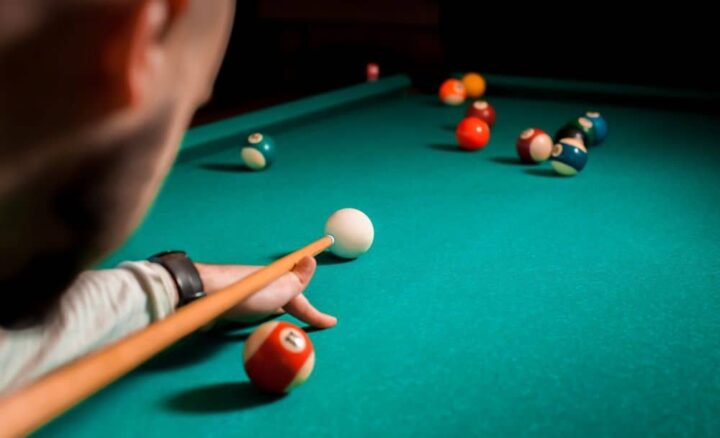
With your grip optimized, you can now start reviewing your swing. This is where you line up your body as you prepare for a shot, and there’s a proper technique that you need to master to make your shots consistent.
The trick is to make as little movement as possible to your shooting arm. The pendulum swing is a technique where your upper arm stays as still as possible while your lower arm swings like a pendulum to shoot. It would be best to keep your shooting hand under the elbow.
It would help if you also capitalized on the swinging motion to line up your shot and control the power of the impact. Backswings should be slower, and your forward force be fast but controlled. Mastering this will create a gap in skill level for rookies.
5. Set a Proper Bridge
A bridge is a hand stance you’ll put your stick on top of to direct the forward force properly to the ball. This is critical as all other forms would be useless if you can’t make a firm bridge. You can learn many bridge techniques, and their uses vary per angle and power, but we will be covering a much more friendly stance called the open bridge.
To make an open bridge, place your hand on the table, cup it, and press your thumb against your forefinger. You can adjust accordingly by pulling or pushing your fingers to modify your bridge. The idea is to create a solid bridge that you can use to guide the stick.
Keep practicing on it until it feels natural to you. Try practicing your form and alignment to feel how your form should be in taking precise hits.
6. Imagine an Aiming Line Down The Table
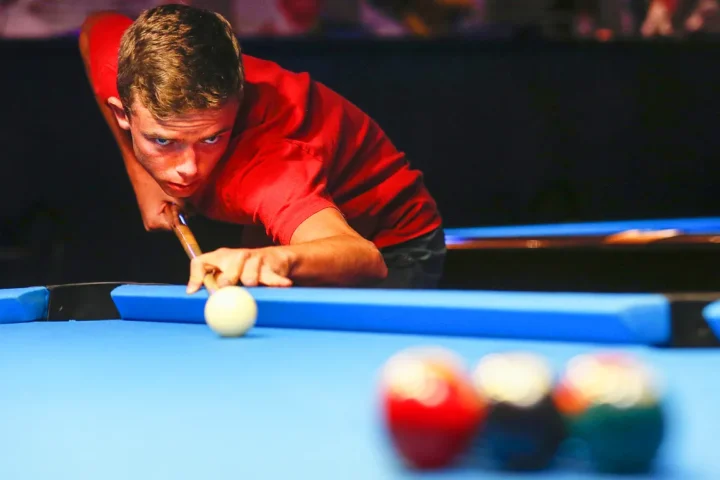
More often, the path needed to score is complicated. However, it would make sense to have an idea or outline of which pocket you’re aiming for when lining up the shot. This is where you can use an imaginary line.
Imagine a line from the pocket’s center to your target ball, continuing down to your cue ball. Next, follow your line to your cue ball and focus back on the target ball when you’re ready to shoot. It may sound confusing at first, but try making this line on your pre-shot routine, and they’ll become a natural skill in every shot you plan and make.
7. Practice Scoring a Ball During Breaking
Breaking is the first official shot of every pool game, and you get to break the racked cue balls at the start of the game and arrange them in different locations.
Pocketing a cue ball during break shots is advantageous to continue playing and bank scores in the game’s first few minutes. Your goal is to at least score a ball by getting the right angle and power when striking the cue ball. Do this by hitting the top ball at various speeds and forces. Study how the racked balls behave after each shot until you find a shot that allows you to score.
8. Pre-Shot Chalking Routine
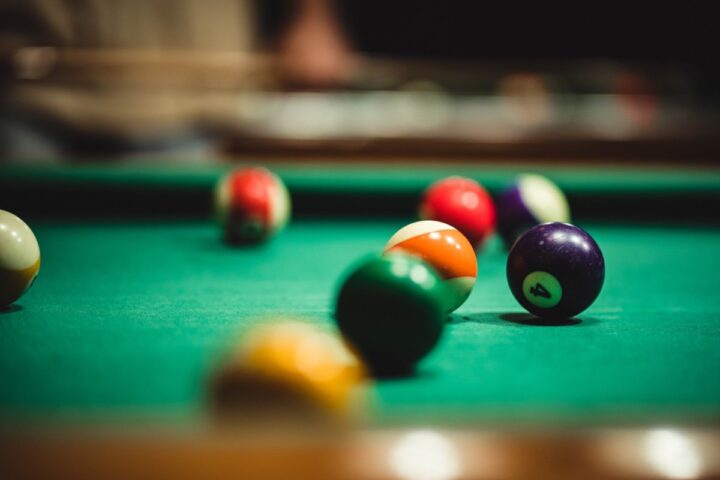
Chalking your cue tip every other shot is integral to every pool game. Cue chalks improve the friction between your ball and cue stick to ensure your shot hits the desired point of the ball and does not slip when making a hit.
Before every pool game, always bring a fresh piece of cue chalk and a good stack in every practice. You want your cue stick to hit quality shots as you improve your pool game consistently.
9. Make it a Routine
All that’s left is to practice everything and make it a natural routine. To improve at the pool, you have to get used to the best forms while being able to make minor tweaks to align your shots against complicated corners and banks.
Final Thoughts
Like any sport, playing pool can be confusing, and it takes a conscious effort to stay consistent with the proper form and hand technique to line up a shot. And as long as you stay determined and confident, the required techniques and form will soon feel natural and make it as normal as breathing as you earn points shot after shot.

